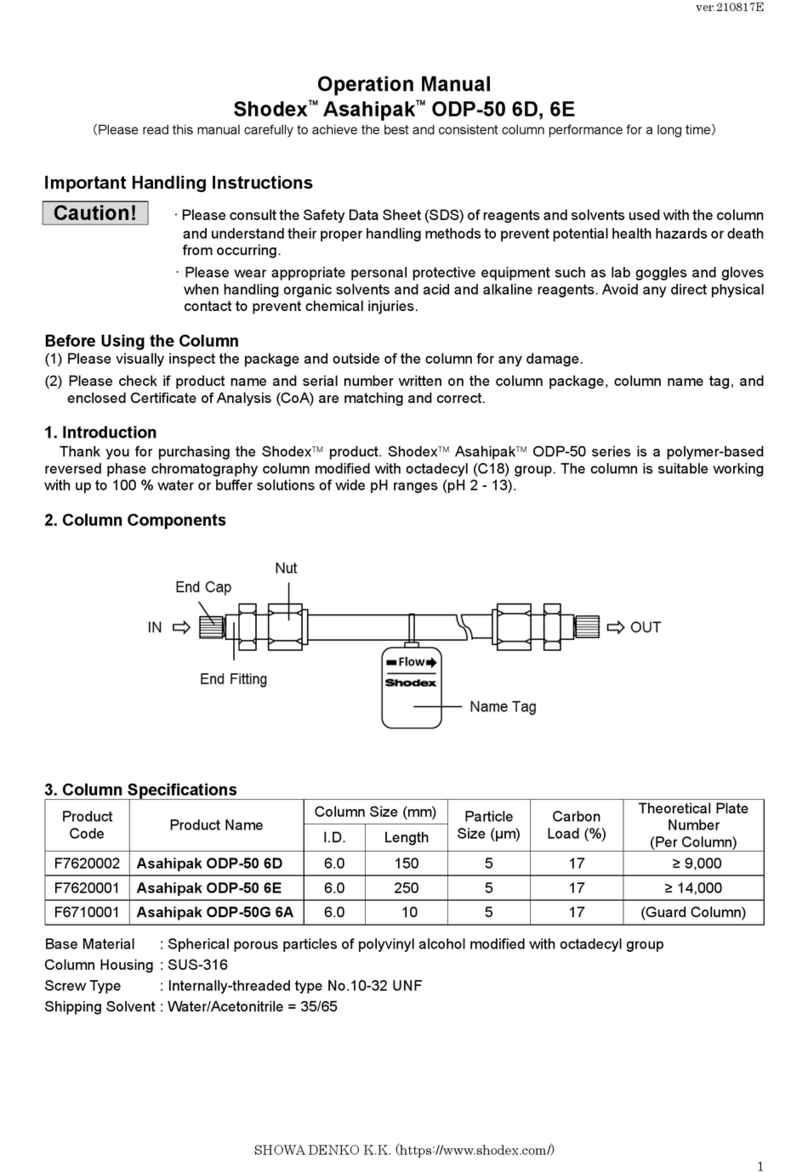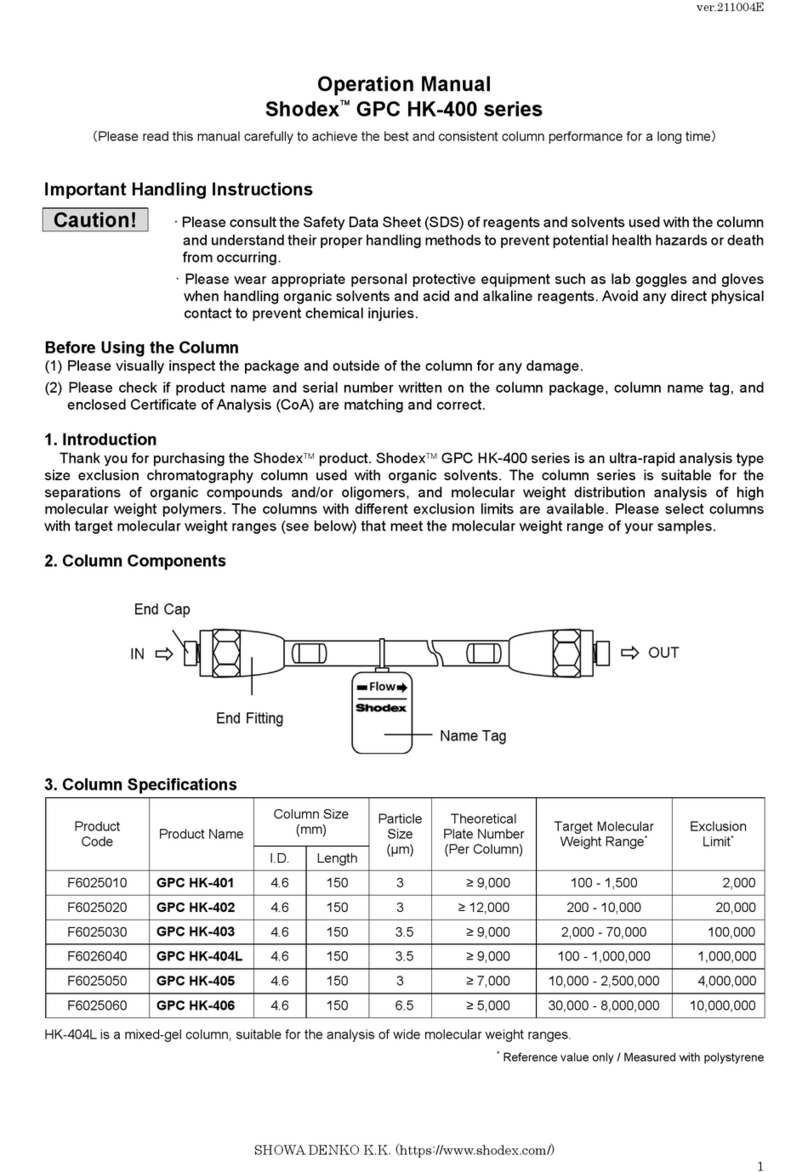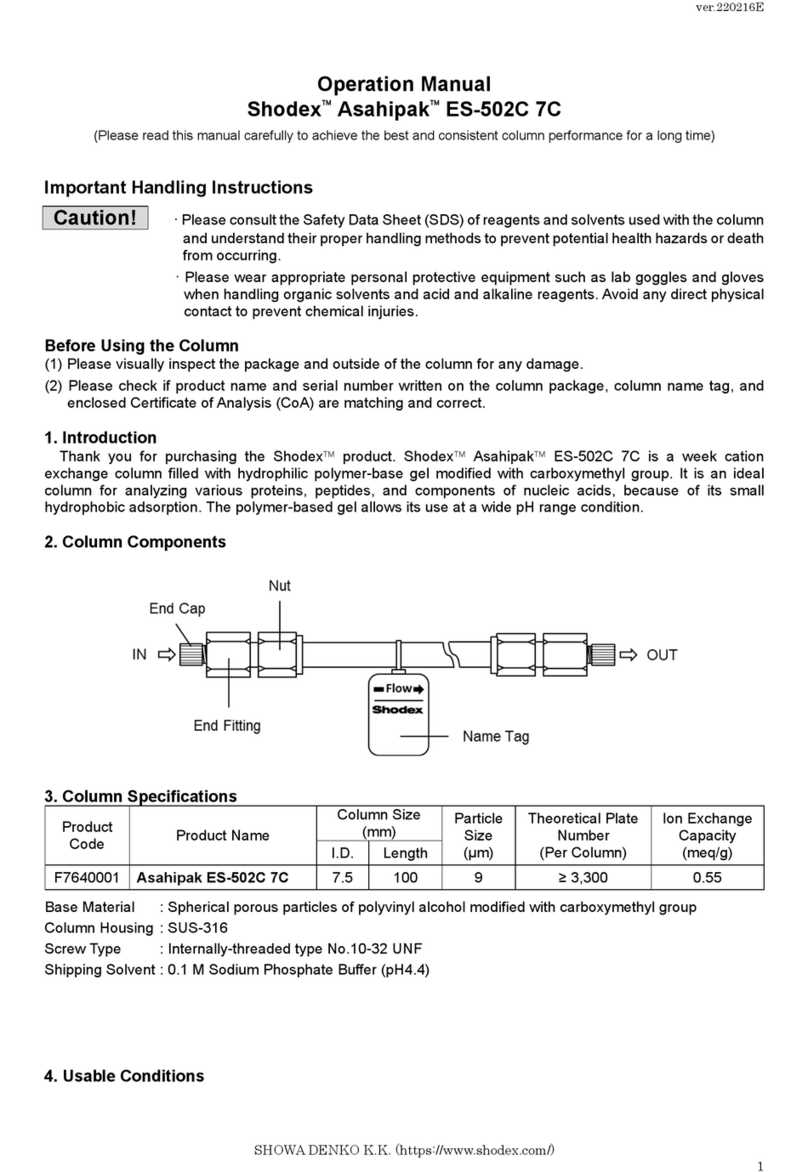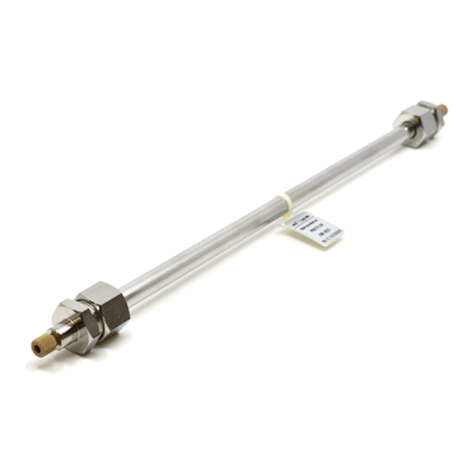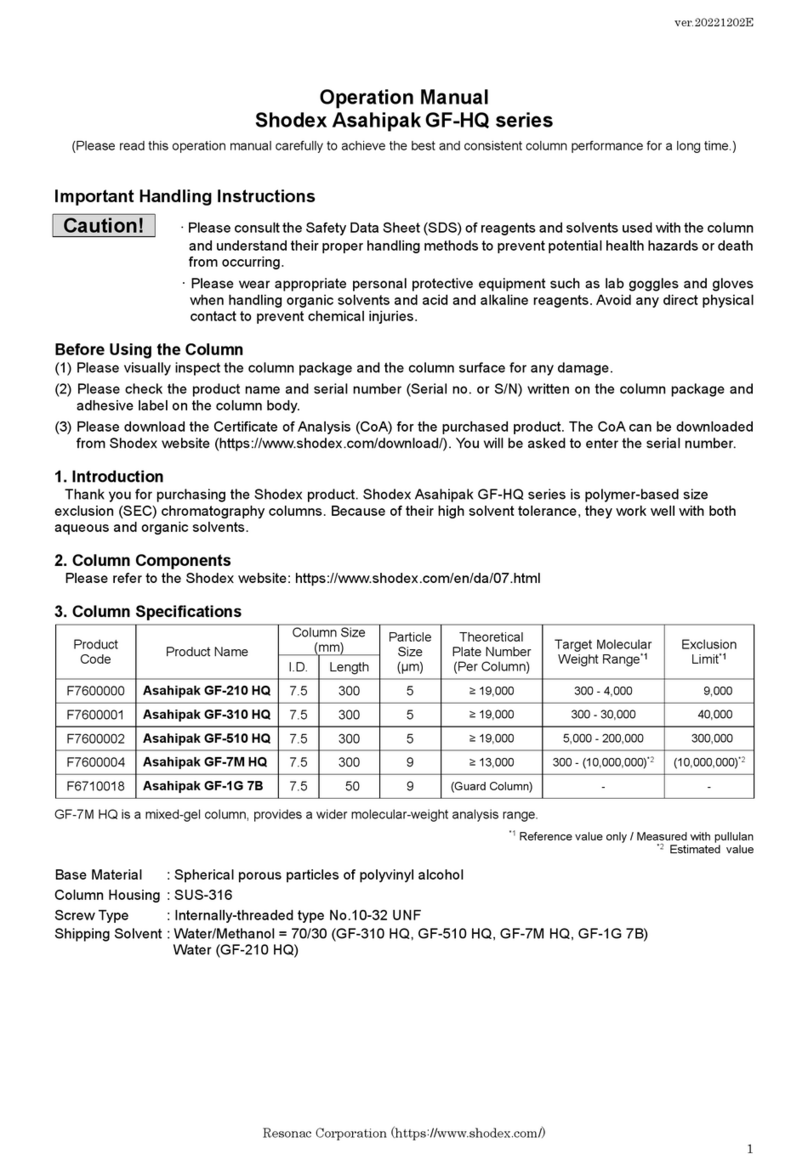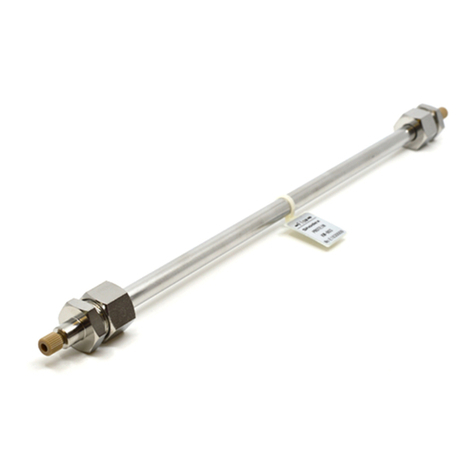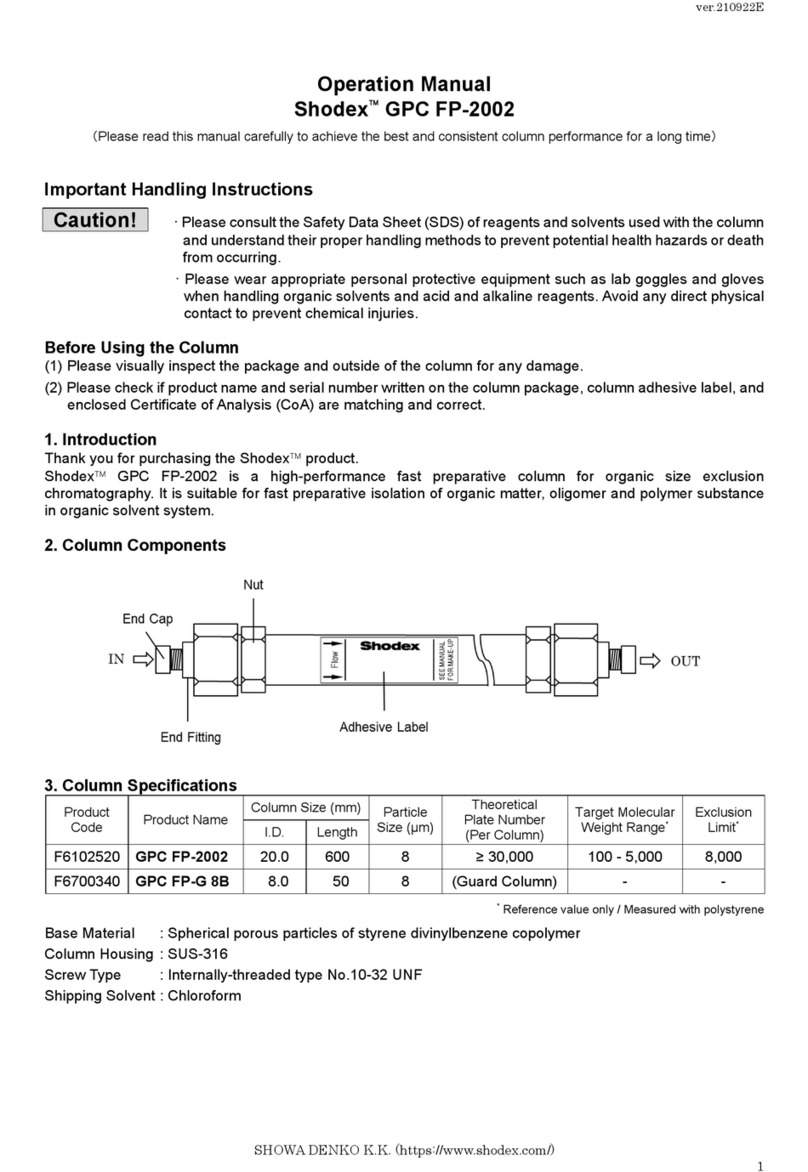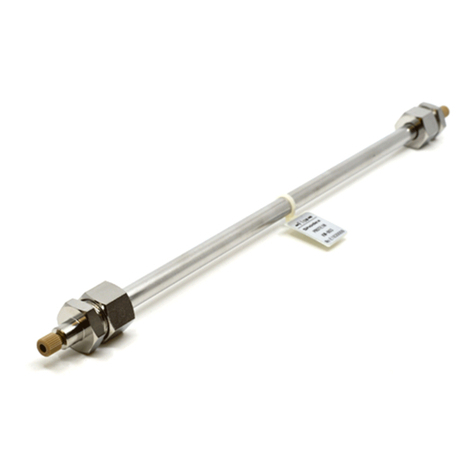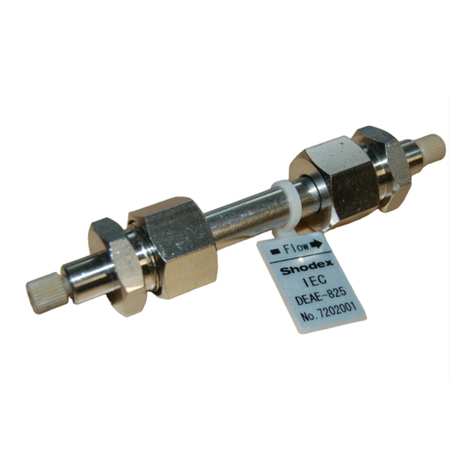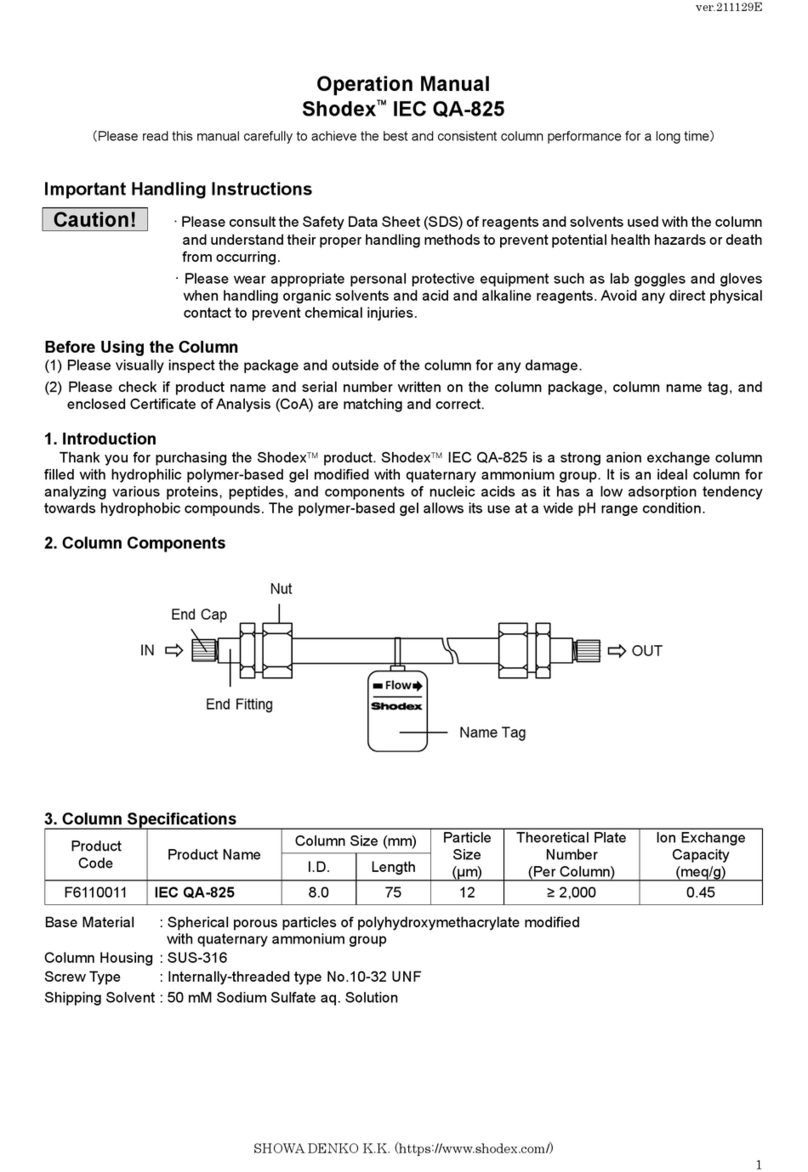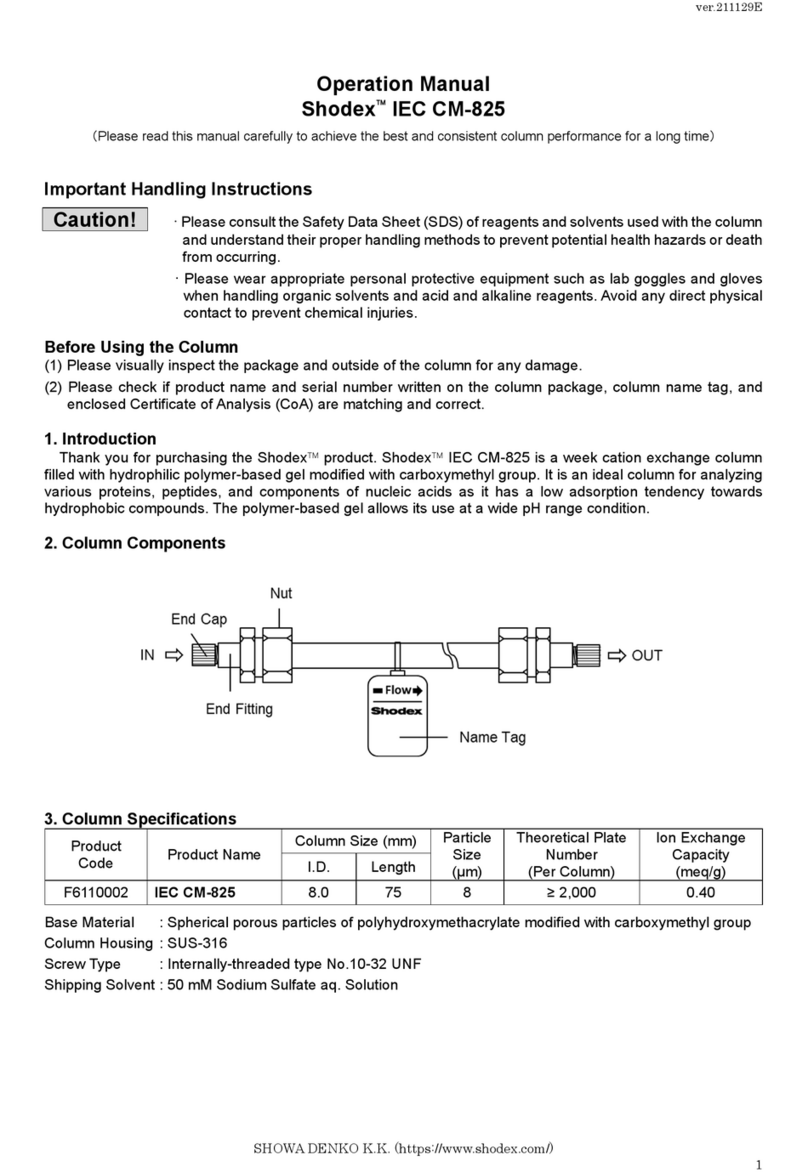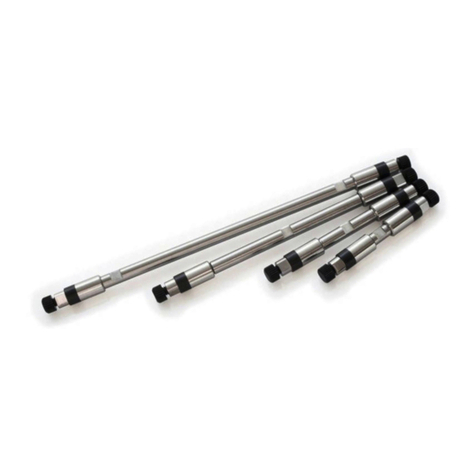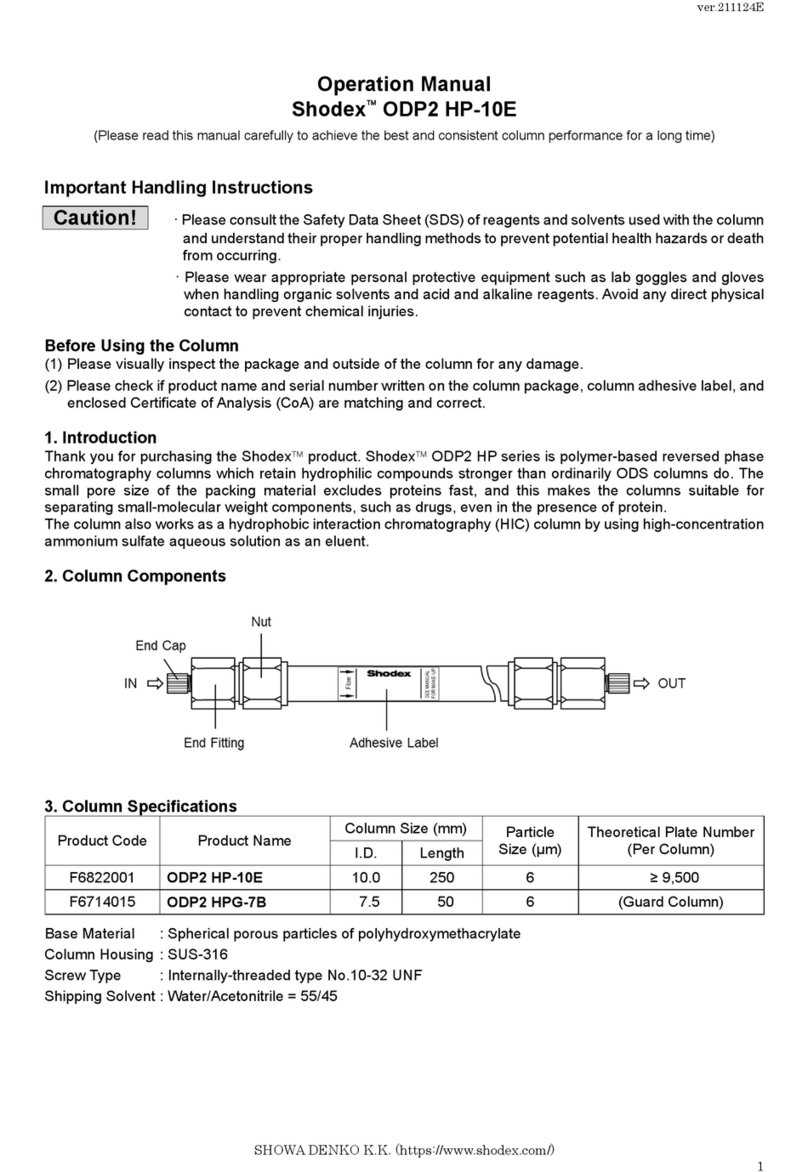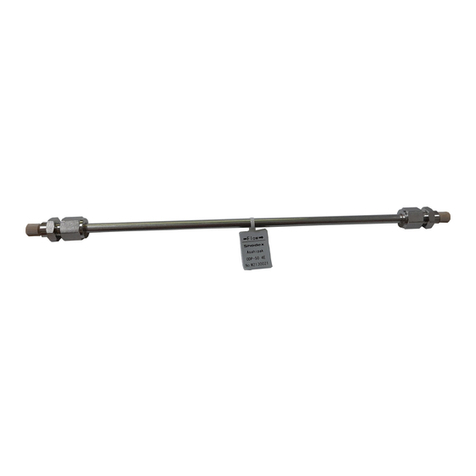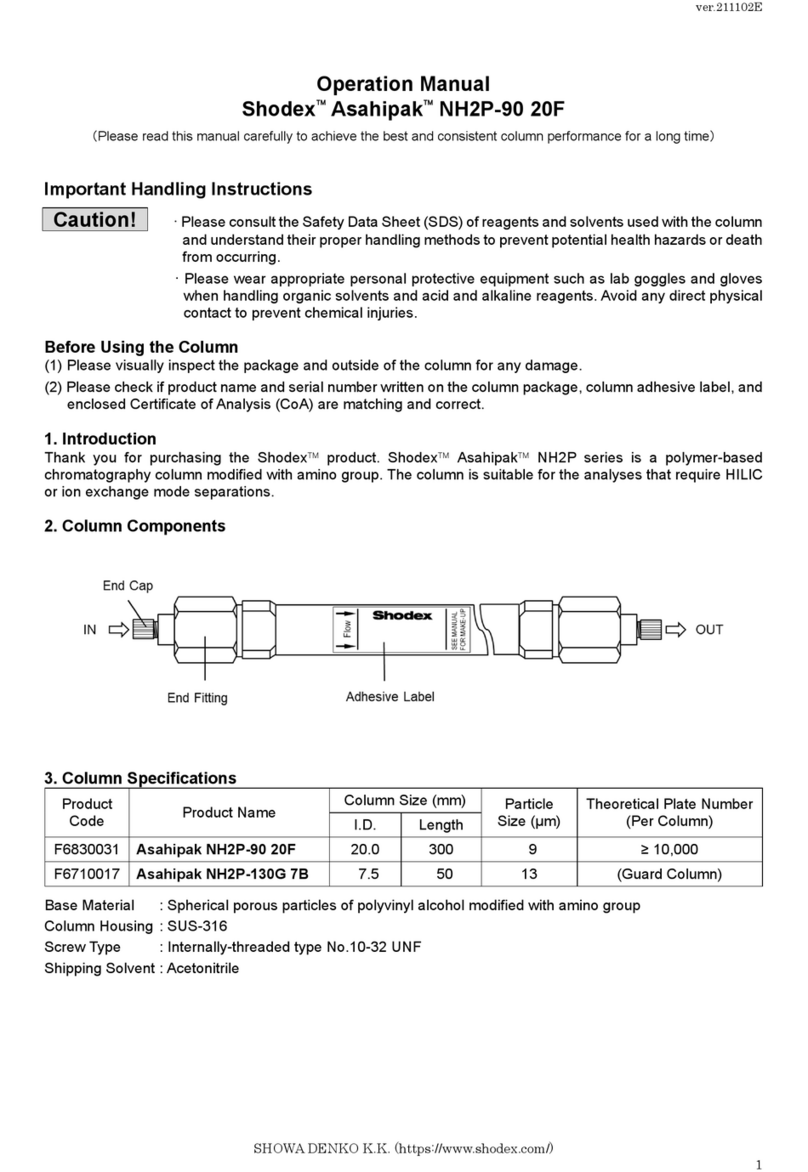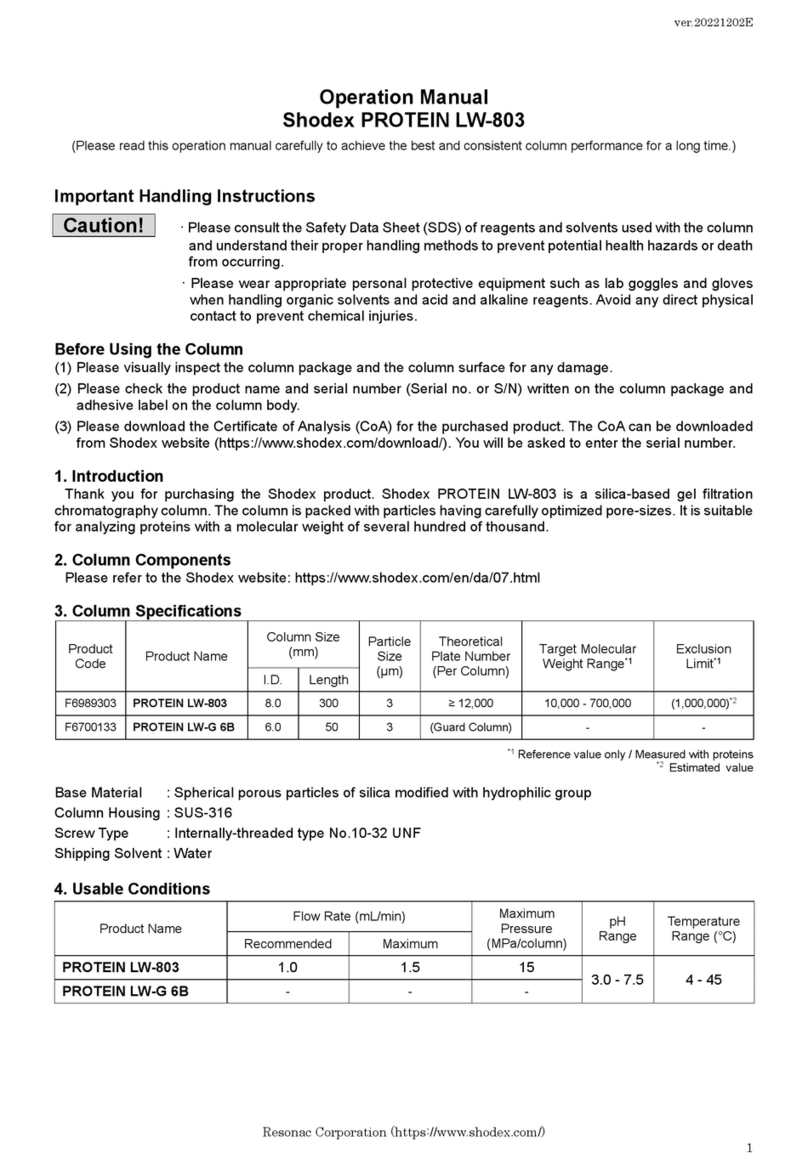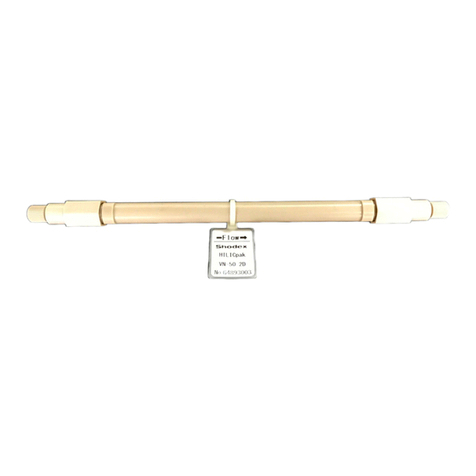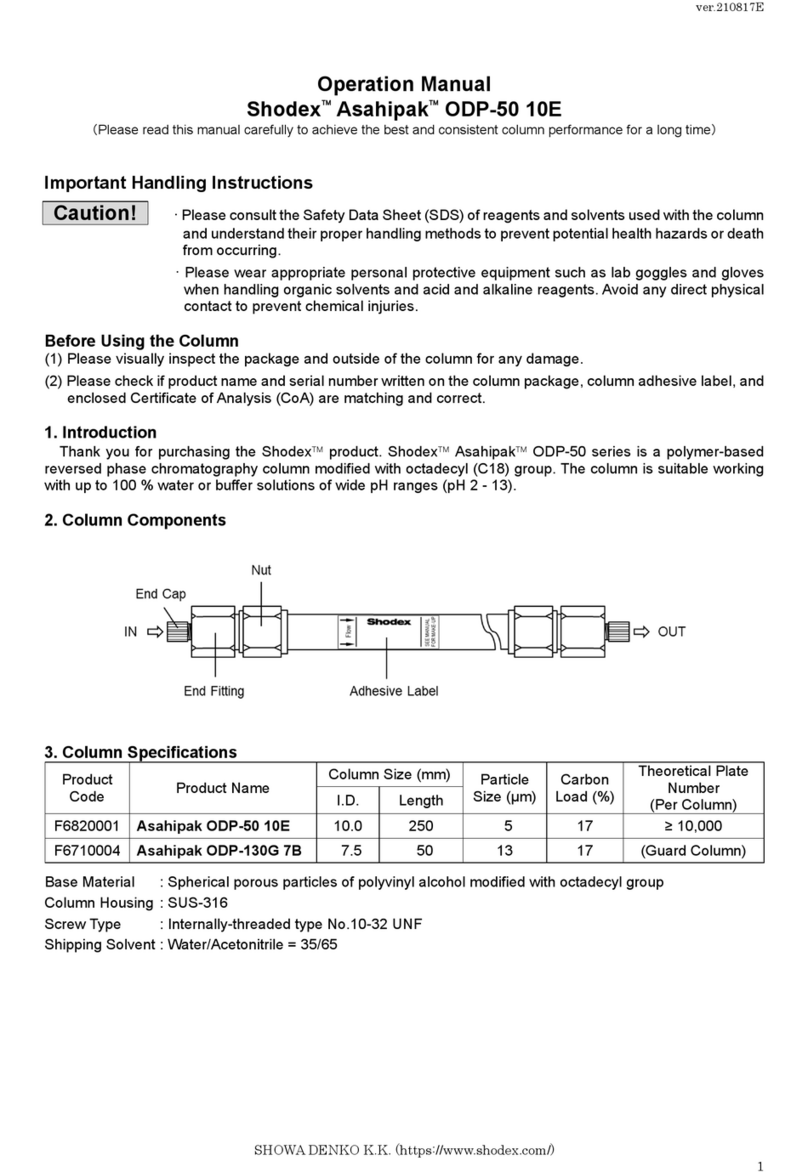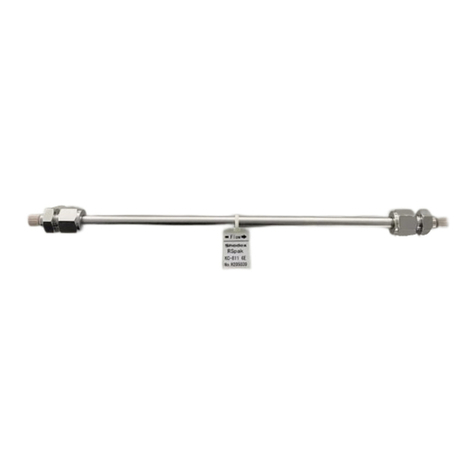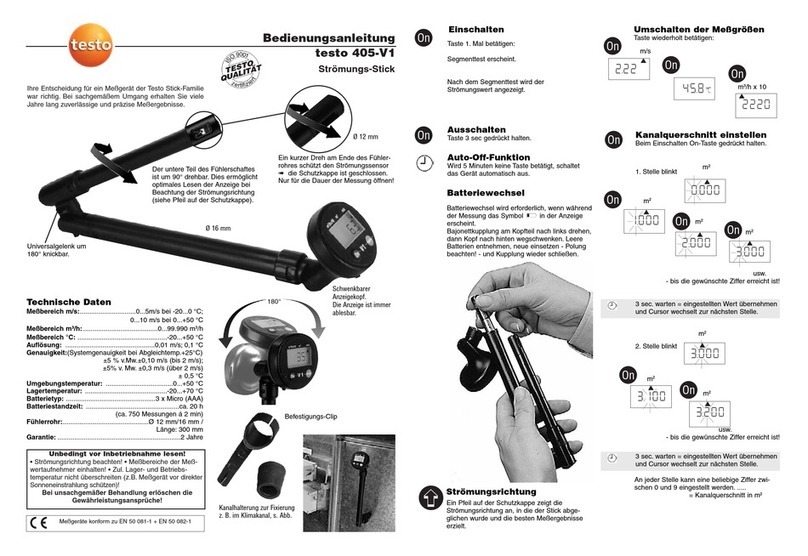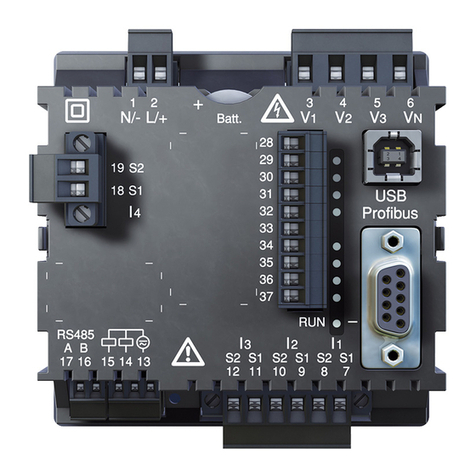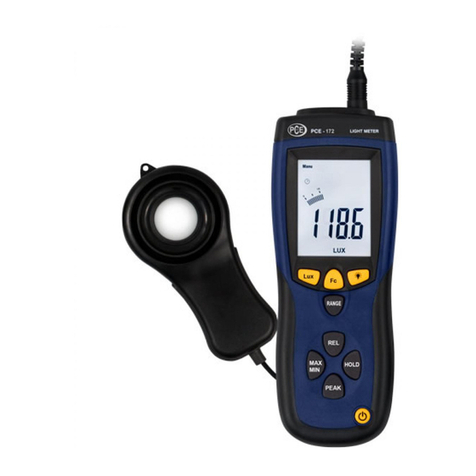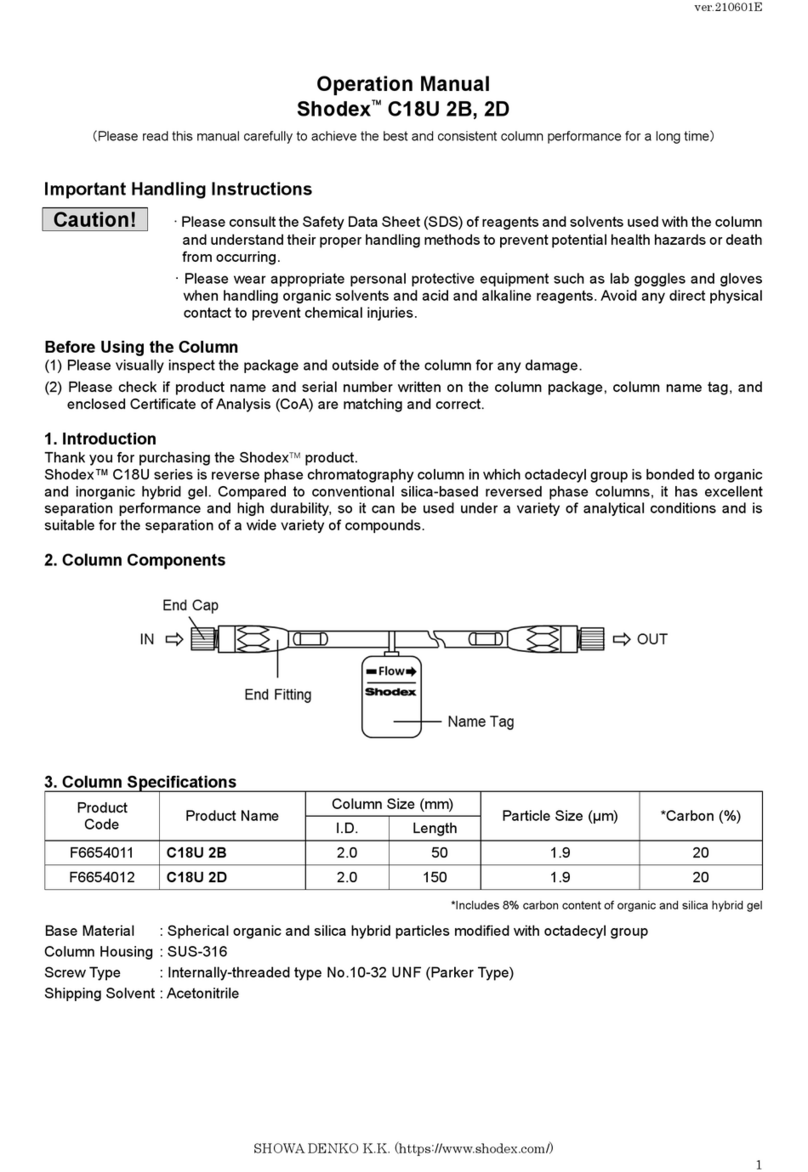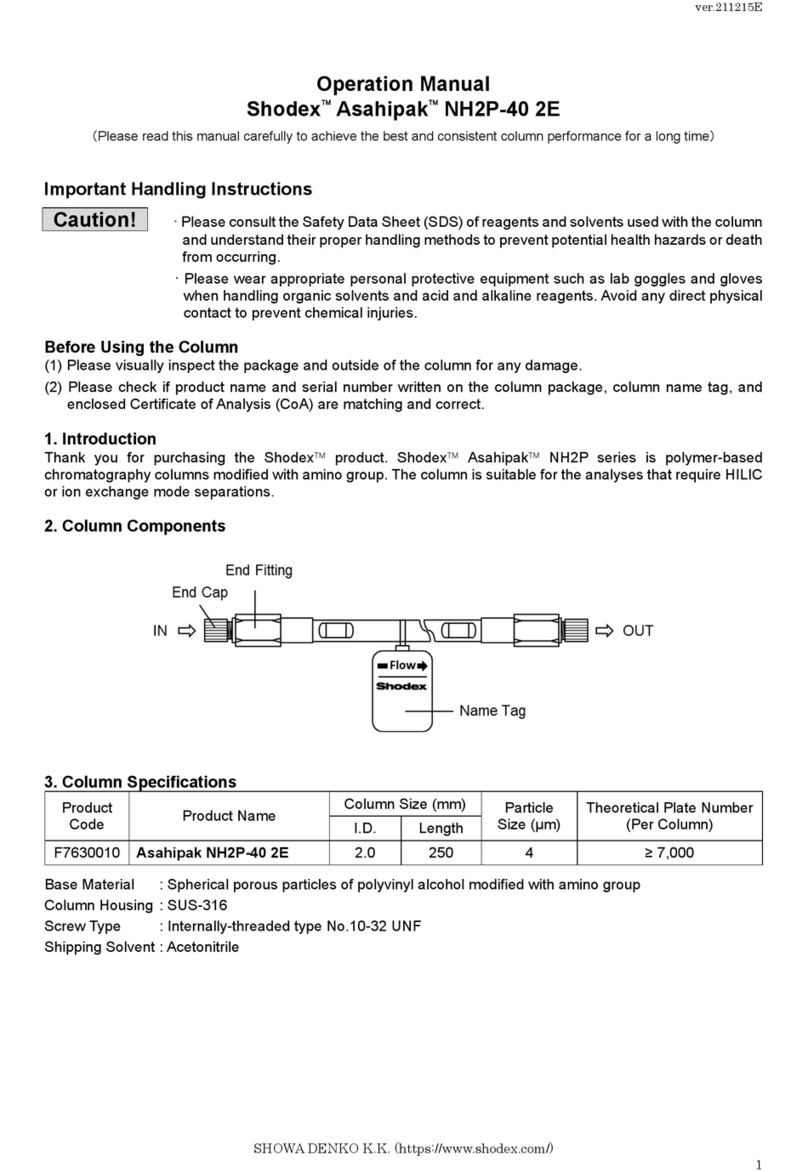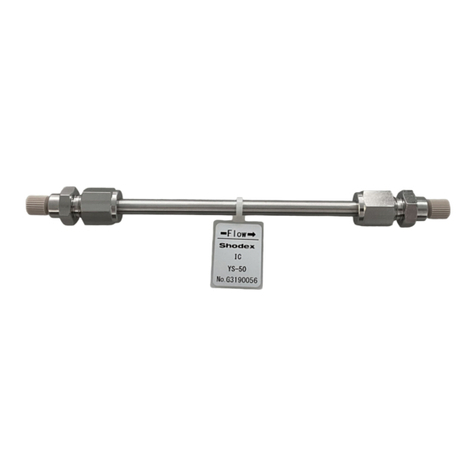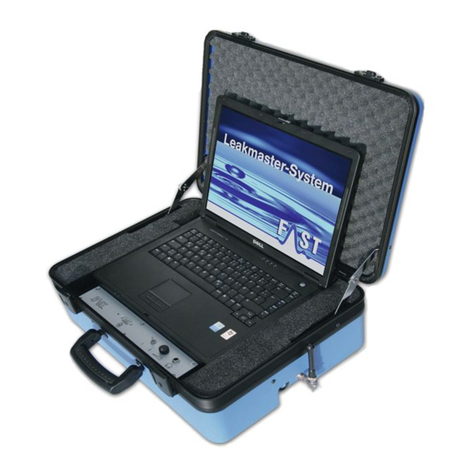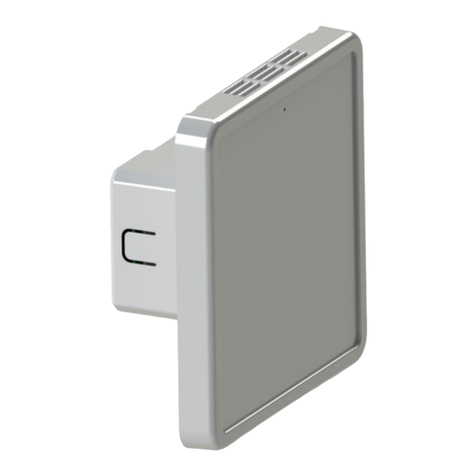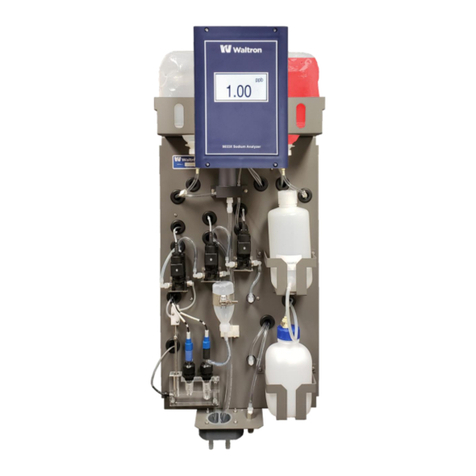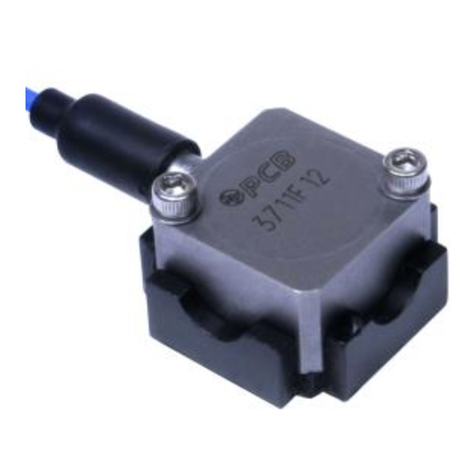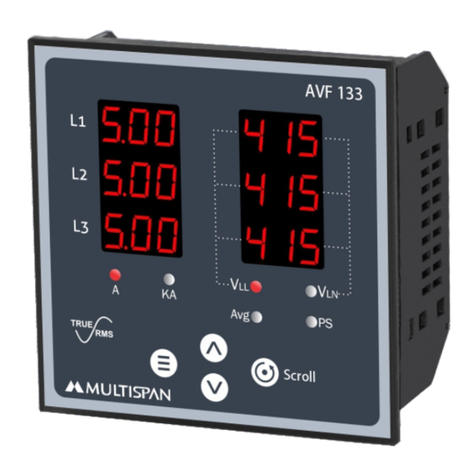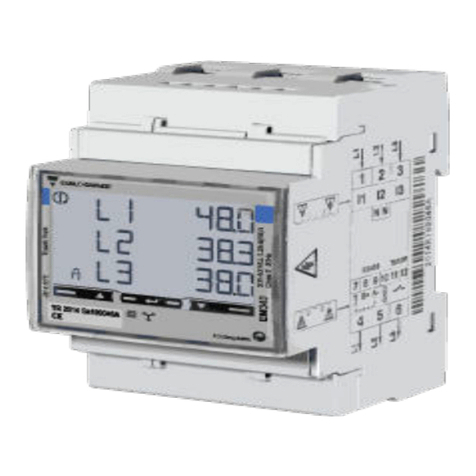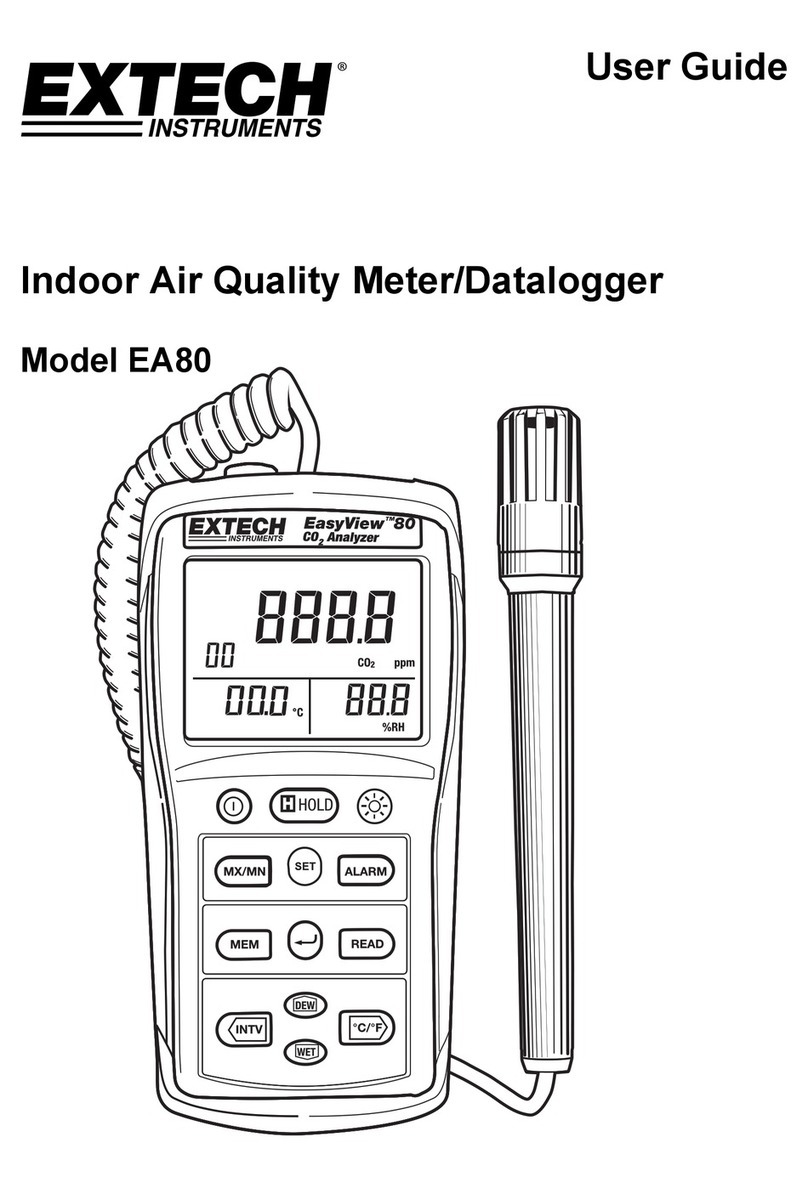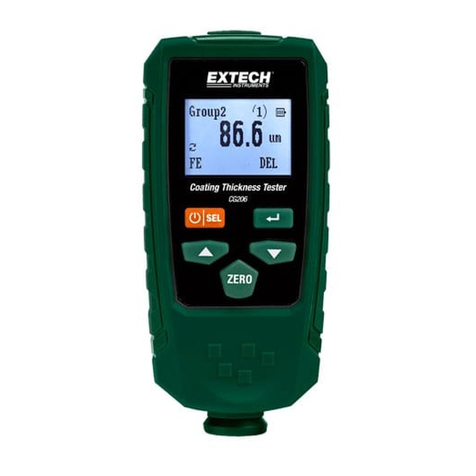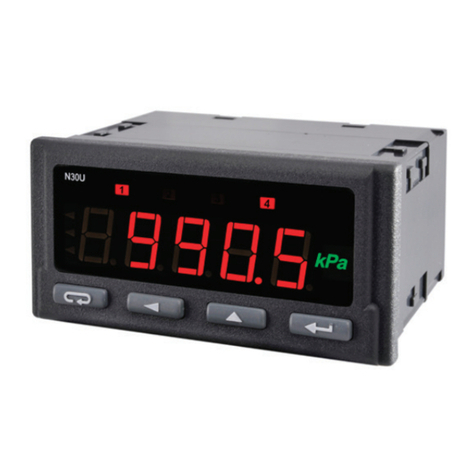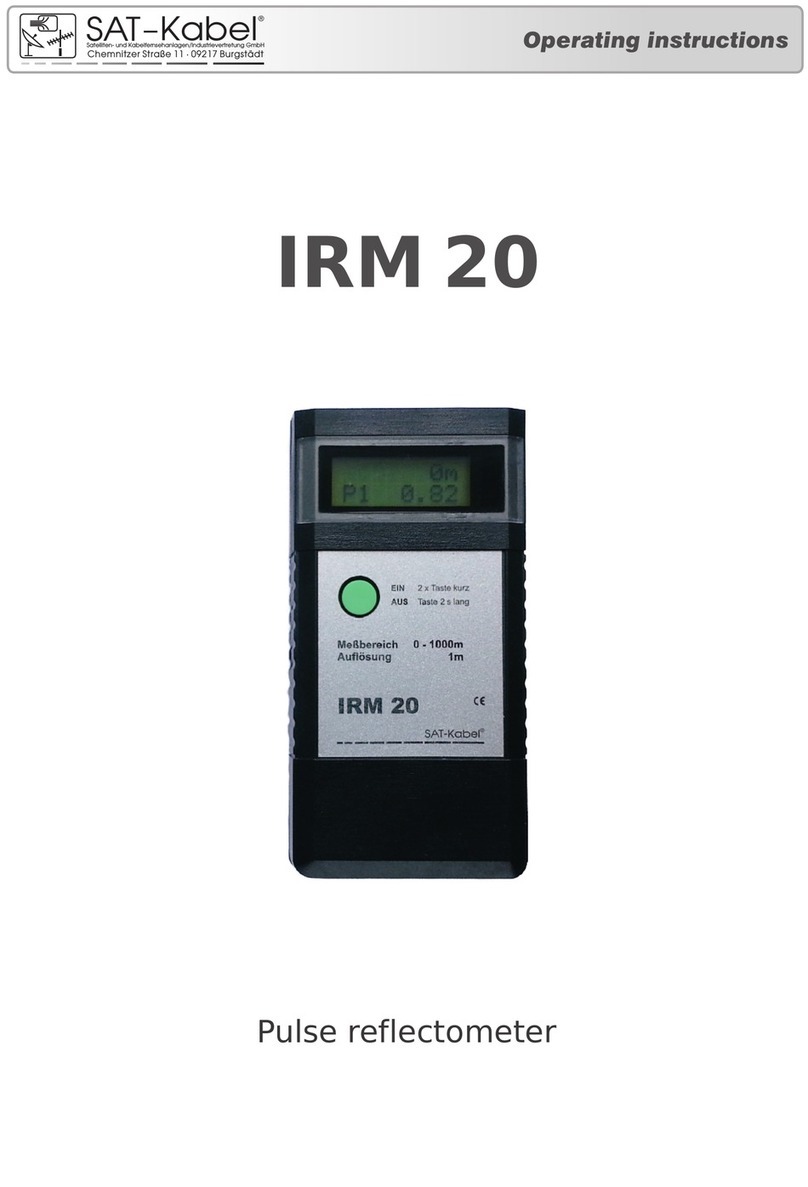
ver.211129E
SHOWA DENKO K.K. (https://www.shodex.com/)
2
Usable solvents are listed below.
(1) 100 % water cannot be used. Be sure to mix at least one organic solvent: mix in 30 % or more methanol,
10 % or more acetonitrile, or 5 % or more THF. The mentioned organic solvents can be used up to 100 %.
(2) Various buffer and aqueous salt solutions can be used. They include buffers such as phosphate, acetate,
and Tris and salts such as sodium chloride, potassium chloride and sodium sulfate. Please keep total
concentration of salts under 0.5 M.
Attention! · Use the column within above stated flow rate, pressure, and temperature ranges. Using
the column outside the given range may damage the column and lower its performance.
· When using a mixture of buffer (or aqueous solution of salt) and organic solvent, make
sure there is no precipitation of salt.
· When using highly corrosive salts such as sodium chloride, wash out the salts at the end
of analysis. The metal parts of the devices and/or the columns may rust.
·Column pressure is influenced by the eluent composition, flow rate, and column
temperature. When changing the eluent compositions, adjust the flow rate and column
temperature so that the column pressure remains below the usable maximum pressure.
5. Eluent Preparation
(1) Degas the eluent fully to prevent the formation of air bubbles.
(2) Presence of small debris or insoluble substances may result in deterioration of the column and/or they appear
as noise on the chromatograms. Filter the eluent with a 0.45-μm disposable filter to prevent the problems.
Attention! · Whenever water is required, use ultra-pure water freshly generated by a water purification
system or water from a newly opened HPLC grade distilled water bottle. Use HPLC grade
organic solvent whenever possible. Solvents left in an opened bottle for a long time should
not be used. The content may have been changed, absorbed moisture, or has been
contaminated.
· Always use freshly prepared solvents. Solvents stored for a long time may have changed
their compositions and may influence elution patterns and/or damage the column.
Note · Use of on-line degasser is recommended.
6. Sample Preparation
(1) If possible, use the eluent for analysis to dissolve or dilute samples. If this is difficult, use a solvent which
has a composition that is as close as possible to the eluent's composition, but which fully dissolves or dilutes
the sample. When gradient elution is used, it is recommended to use the initial eluent to prepare the sample.
(2) Filter the sample solution using disposable 0.45-μm filter to prevent the column from clogging or deteriorating.
(3) Recommended injection volume is 20 μL per column.
(4) For the samples containing proteins, remove the proteins prior to the sample injection.
7. Column Usage Procedure
7.1 HPLC System Preparation
Wash entire LC system prior to the column installation, including all flow-lines and sample loop by switching the
valve, and then replace the washing solution with the eluent to be used. If desired new eluent has low
miscibility/solubility to the eluent of previous analysis, first use the eluent that is miscible/soluble to both eluents,
and then replace it with the desired eluent.
e.g. When replacing chloroform to water/acetonitrile, first run methanol and then replace it with water/acetonitrile.
e.g. When replacing highly concentrated buffer solution or salt solution to water/acetonitrile, first run water and
then replace it with water/acetonitrile.
Attention! · If the eluent left in the system is not compatible with the column to be used, it may damage
the column.
· A drastic change in the eluent compositions may remove substances adsorbed on the
system and they may enter and deteriorate the column.





